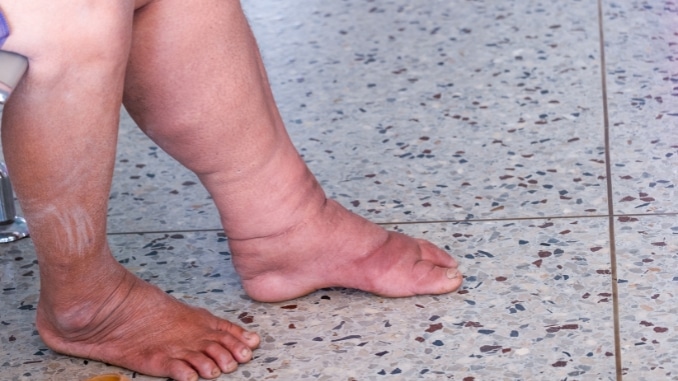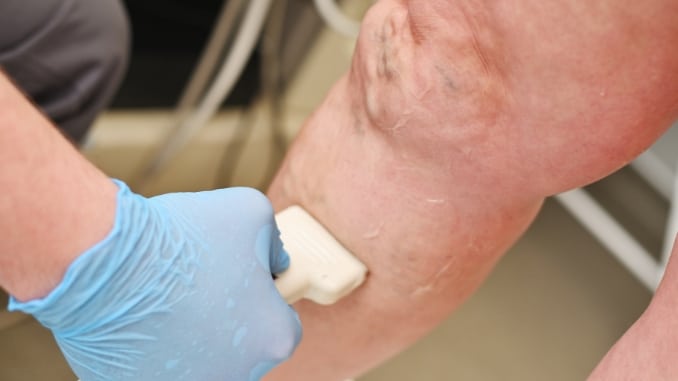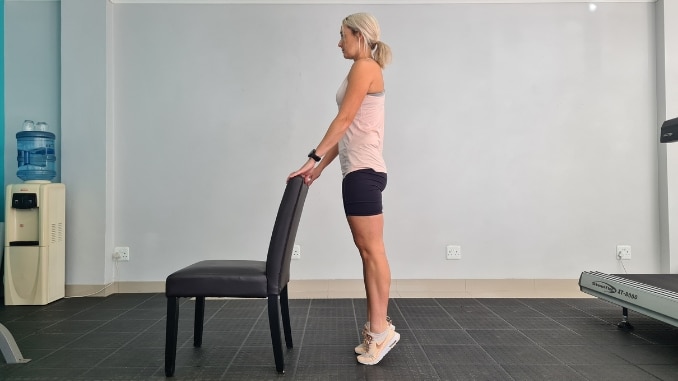
Lymphedema is a swelling caused by an accumulation of protein-rich lymph fluids in the body. Most commonly, this condition can affect the arms or legs, but it can also affect other parts of the body, such as the chest wall, abdomen, neck, and genitals. Any medical condition that blocks the drainage of the lymph fluid can cause this. However, it is usually caused by cancer treatments that damage or even remove your lymph nodes. For more knowledge, continue to read and learn about lymphedema arm exercises.
Moreover, in severe cases of lymphedema, it can affect the mobility of the affected limb or area and increases the risk of skin infections and sepsis, often resulting in skin changes and breakdowns. Generally, treatment includes compression stockings and bandages, massage, sequential pneumatic pumping, gentle skincare routines, and sometimes, surgery to remove swollen tissue or create a new route for drainage.
Lymphatic System and its Importance
The lymphatic system is like a drainage system that runs throughout the whole body. It is a vital part of the immune system because it keeps the body’s fluid levels in balance and defends the body against various infections. It comprises a network of tubes called lymphatic vessels, filters called lymphatic nodes, clear water fluid called lymph, and other tissues, organs, and glands that work together. The lymph contains white blood cells called lymphocytes and chyle, made of fats and proteins from the intestines. Moreover, these water, proteins, and other substances always leak out of tiny blood capillaries into the body tissues surrounding them. This is where the lymphatic system comes in. Their main function is to drain the extra lymph fluid from the body tissues and return it to the bloodstream so that the white blood cells can fight off various infections. And if the lymphatic system fails to drain these, extra fluid will build up in the tissues causing them to swell and result in lymphedema.
Causes of Lymphedema
There are several possible causes where the lymphatic vessels fail to drain the extra lymph fluid. The most common include:
-
- Cancer – A tumor can grow near a lymph node or vessel. Over time, as this tumor grows or enlarges, it can block the flow of the lymph fluid in these areas and can result in lymphedema.
- Radiation Treatment – The radiation from treatment can cause scarring and inflammation of the lymph nodes or vessels, which can cause problems in draining the lymph fluid in these areas.
- Surgery – In some surgeries, especially cancer surgery, the lymph nodes are often removed to see if the cancer has spread to the area. If there are no lymph nodes in the area, then there’s no one to filter the lymph fluids to return to the bloodstream.
- Parasites – Parasites such as threadlike worms are the most common cause of lymphedema because they can clog the lymph nodes.
- Inherited conditions – This is a less common cause of lymphedema, where someone can inherit a condition where the lymphatic system doesn’t properly develop.
Signs and Symptoms of Lymphedema
This includes:
-
- Arms or leg swelling, either a part or whole, including the fingers or toes.
- The affected area may feel tight or heavy and has a tingling sensation.
- Limited range of motion
- Recurring infections
- Hardening or thickening of the affected part of the skin or also called fibrosis
These signs and symptoms can range from mild to severe. And lymphedema, caused by cancer treatment, may not show any signs or symptoms until months or years after treatment.
How is it Diagnosed?
If you have experienced cancer surgery involving your lymph nodes, your doctor may diagnose you with lymphedema after evaluating your symptoms and risk factors.
However, if the reason behind lymphedema is unclear, your doctor may request further imaging tests to examine your lymph system. These tests may include:
-
- MRI (magnetic resonance imaging) scan: This test can produce 3D and high-resolution images to check the involved tissues.
- CT (computed tomography): This test can also produce cross-sectional images of the body’s structures. This is particularly important because it can reveal blockages in the lymphatic system.
- Ultrasound: This test can produce images of internal structures and aid in finding various obstructions within the lymphatic and vascular systems.
- Lymphoscintigraphy: In this test, the person will be injected with a radioactive dye and scanned using a machine. Then the image will show the dye moving through the lymph vessels and can highlight blockages in the vessels.
How is Lymphedema Treated?
As of now, there is no cure specifically for lymphedema. However, the goal of treatment for this includes reducing swelling, relieving symptoms, and preventing it from worsening. And then your doctor will plan what management is suitable for your case and lymphedema arm exercises is one of the recommended action to do.
This includes:
-
- Regular exercise – Moving your swollen arms or legs may help drain your lymph fluid and reduce swelling.
- Compression sleeve or stocking – This can fit tightly on your swollen arms or legs, which can help flow lymph fluid in the area.
- Massage therapy – There is a massage specifically for this kind of condition. It is called manual lymph drainage. This type of massage can help push the lymph fluid out of the swollen arms, legs, or any part of your body.
- Pneumatic pump – This involves a machine that inflates the sleeve that you can place on your swollen arms or legs. It has the same function as the compression sleeve or stocking, which can help flow lymph fluid in the area.
- Weight loss – Patients who are overweight are advised to lose weight as symptoms may improve with weight loss.
- Cancer treatment – If the cause of lymphedema is cancer, treatments are needed to improve lymphedema.
- Surgery – This is recommended if lymphedema is severe and nonsurgical treatments do not manage symptoms.
How to live with Lymphedema?
Once a person has lymphedema, although the symptoms can be managed, they may frequently experience painful swelling. The key to living with lymphedema is to prevent infections and allow fluids to flow into the affected area to reduce swelling. Here are some helpful ways you can do:
-
- Always keep the affected area elevated – Raising the affected area, such as the arms or legs above your heart, can prevent blood from pooling in your limbs’ lower portions. Aside from this, it can also help the lymph fluid flow into the capillaries.
- Exercise Regularly – Regular exercise and physical activity can improve the drainage of lymphatic fluids. You can consult your doctor or physical therapist for specific hand, arm, foot, or leg exercises and you may also do the lymphedema arm exercises below.
- Wearing gloves – If you have lymphedema in your hands, wearing gloves could benefit you when doing gardening, cooking, and other chores. This will protect your hand from injuries that could result in infection. Then if you have wounds, wash them also with soap and water and apply antibacterial ointments prescribed by your healthcare provider. If symptoms of infection are shown, then consult your doctor.
- Avoid extreme temperatures – Avoid heating pads and hot tubs or saunas. This is because if you have lymphedema, you’ll have decreased sensation. Decreased sensations can result in burning your skin without your knowledge.
- Wear compression garments such as compression sleeves or stockings – These garments will help prevent swelling and lymphedema.
What Exercises can I do if I have Lymphedema?
Lymphedema arm exercises is beneficial to someone who has lymphedema. However, there are some precautions needed.
-
- Always wear compression garments such as sleeves or stockings when exercising.
- Avoid exercising the affected area to the point of fatigue.
- Have some exercise modifications if needed to avoid trauma and overuse.
Follow these guidelines of lymphedema arm exercises, including the ones your specialists recommend you do so. Too much exercise can also cause strain or injury and exacerbate lymphedema symptoms. As with any new exercise, starting slowly and gradually increasing the intensity is recommended.
Deep Breathing
Deep breathing exercises can help improve the flow of lymph fluid throughout the whole body. It also allows the lymph to flow into the lymph system in the chest away from the affected area.
How to do:
-
- Try to relax your shoulders and upper chest while resting one of your hands just in the middle of your abdomen below your ribcage and one on your chest.
- Then take a slow, deep, and comfortable breath through your nose while feeling your hand rise with your abdomen.
- Slowly breathe out through your mouth while feeling your hand goes back to the starting position and your abdomen is flat again.
- Repeat this movement.
- Lastly, complete 3-5 deep breaths, 1 set.
Exercises for Arm Lymphedema
1. Neck Range of Motion Exercises
- Sit upright in a chair with your arms on the side of your lap.
- First, tilt your head towards your right shoulder, then hold this position for 3-5 seconds before returning it in the middle.
- Repeat this movement on the opposite side. Make sure that your shoulders don’t follow your head.
- Second, turn your head up and look at the ceiling, then hold this position for 3-5 seconds before returning it in the middle.
- Repeat this movement. Make sure that your shoulders don’t follow your head.
- Third, bend your head down so that your chin goes towards your chest, then hold this position for 3-5 seconds before returning it in the middle.
- Repeat this movement. Make sure that your shoulders don’t follow your head.
- Complete 5 to 10 repetitions each step, 1 set.
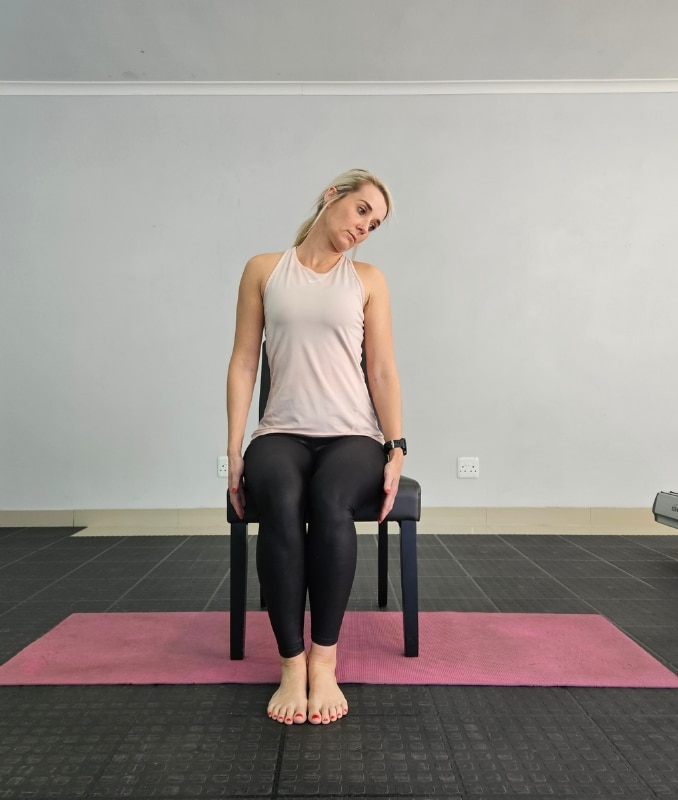 |
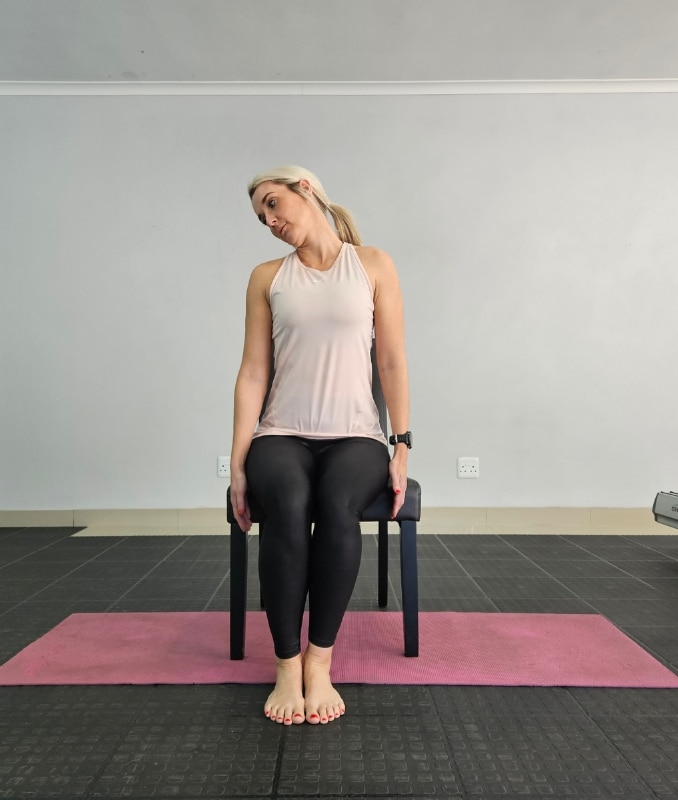 |
 |
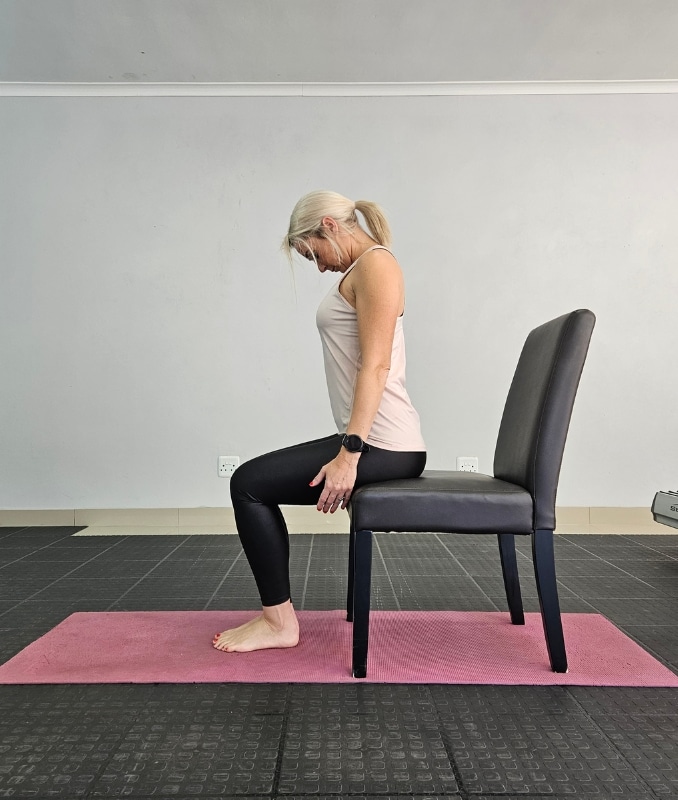 |
The Shoulder Range of Motion Exercises
- Sit upright in a chair with your arms on the side of your lap.
- First, bring your shoulders up towards your ears, then hold this position for 3-5 seconds before returning it down.
- Repeat this movement. Make sure your shoulders are the only ones moving here and not your neck.
- Second, rotate your shoulders in a circular motion forward, then rotate them again in the opposite direction.
- Repeat this movement. Ensure your shoulders are the only ones moving here, not your neck.
- Complete 5 to 10 repetitions each step, 1 set.
Shoulder Shrugging
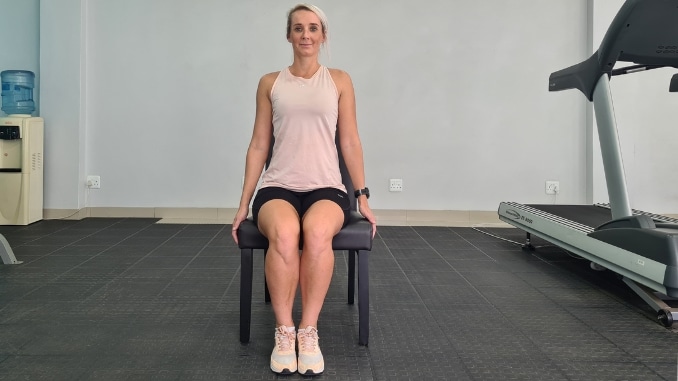 |
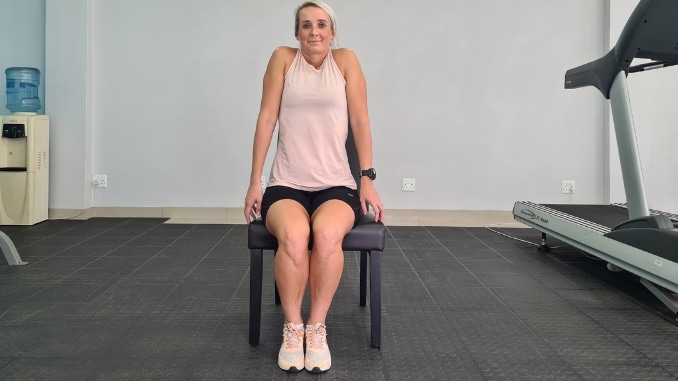 |
Shoulder Rolling
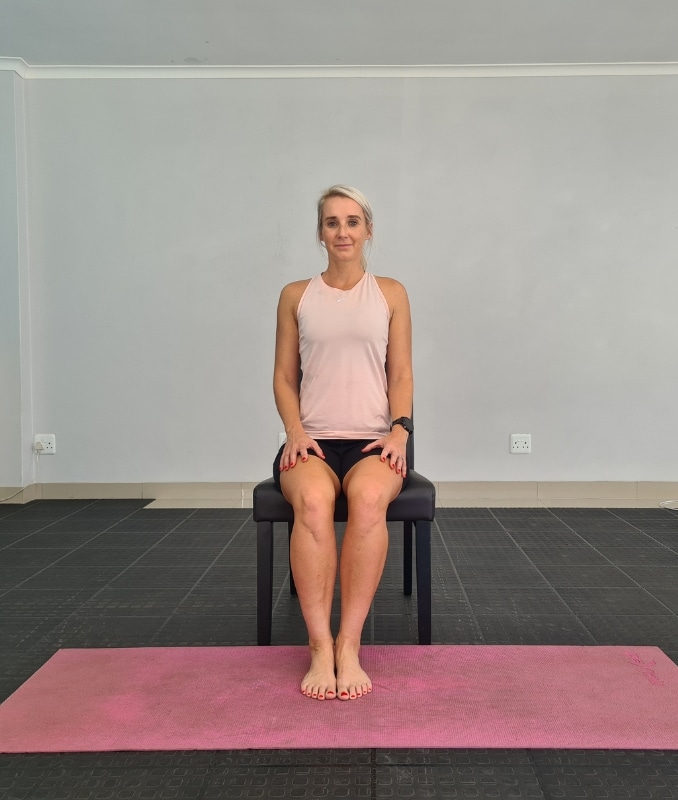 |
 |
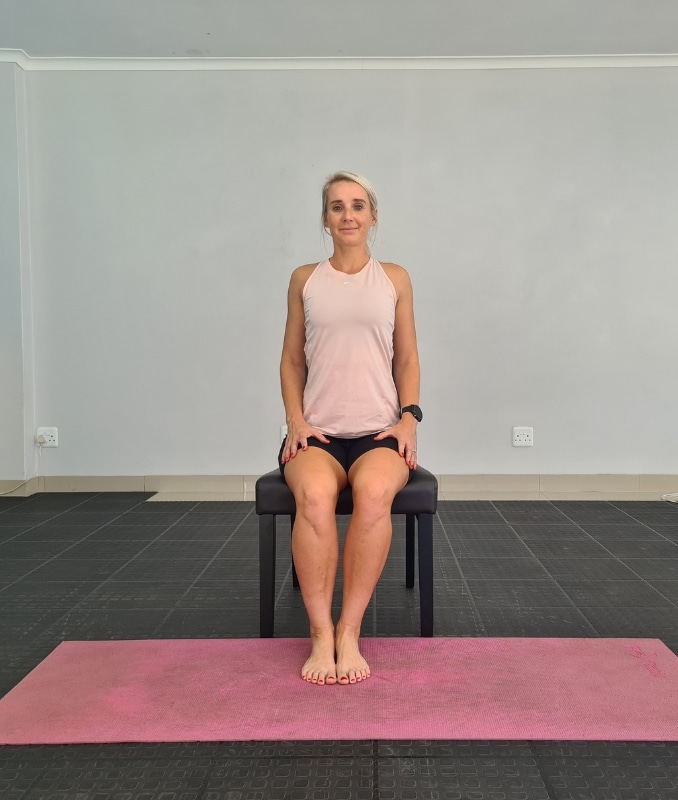 |
2. Arm Exercises
- Sit upright in a chair with your arms on the side or your lap.
- Pretend you are doing backstroke swimming by swinging your right hand behind your back and in front of you, followed by your left-hand alternating motion.
- Repeat this movement.
- Complete 5 to 10 repetitions, 1 set.
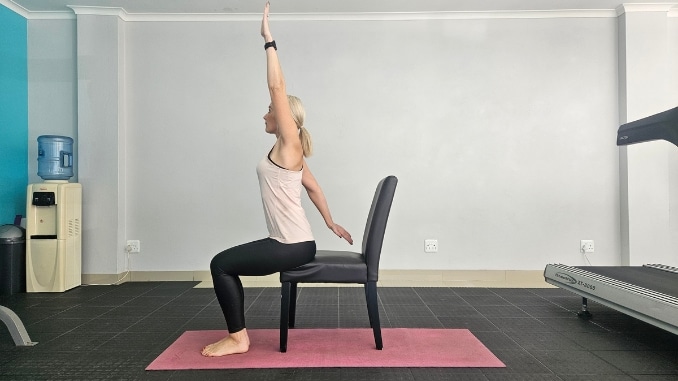 |
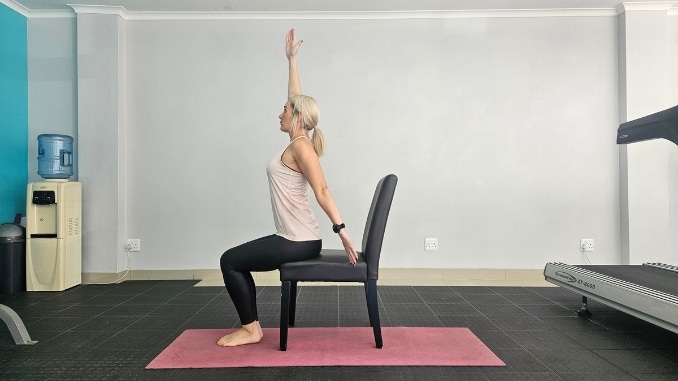 |
3. Elbow Flexion
- Sit comfortably in a chair.
- Keep your shoulders relaxed, and also your back and neck straight.
- Place your affected arm on your side, and make sure your elbow is close to your body with your palms facing in front.
- Then bend your elbows slowly, raise your palms towards your chest, and return to the starting position.
- Complete 10 repetitions, 1 set.
- You can also repeat this on your unaffected limb to maintain strength.
- To make it advanced, you can perform this with one-pound dumbbells.
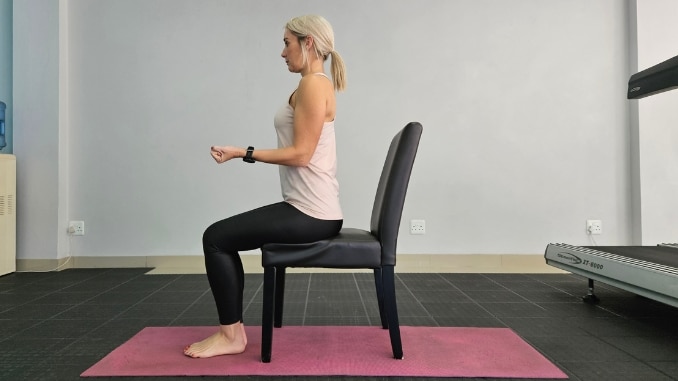 |
 |
4. Wrist Exercises
- Sit upright in a chair with your arms on the side of the chair with your hand hanging off the edge of the armrest.
- Then bend your wrist down until you feel a gentle stretch and hold this position for 3-5 seconds before returning it to the starting position.
- Complete 5 to 10 repetitions, 1 set.
- Now turn your wrist in a circular motion clockwise, then in the opposite direction.
- Complete 5 to 10 repetitions in each direction, 1 set.
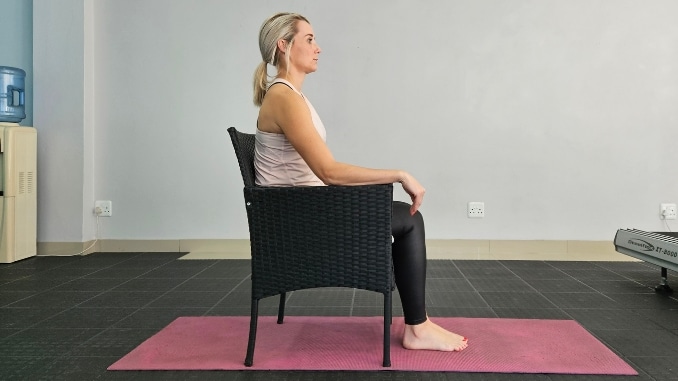 |
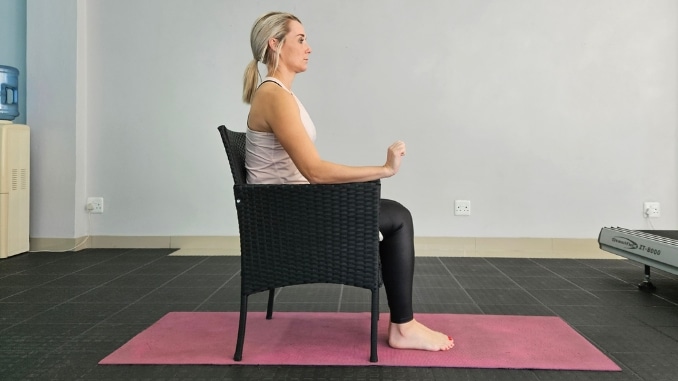 |
5. Hand Exercise
- Ball squeeze
In this another lymphedema arm exercises, you need a small, flexible, and lightweight ball.
How to do:
- Sit upright in a chair with your arms on the side or your lap.
- Keep your shoulders relaxed, your back and neck straight.
- Extend your affected arm out in front of you and grasp the ball using your fingers and palms.
- Then squeeze the ball as tightly as you can, hold it for 7 seconds, then relax again.
- Complete 10 repetitions, 1 set.
- You can also repeat this on your unaffected limb to maintain strength.
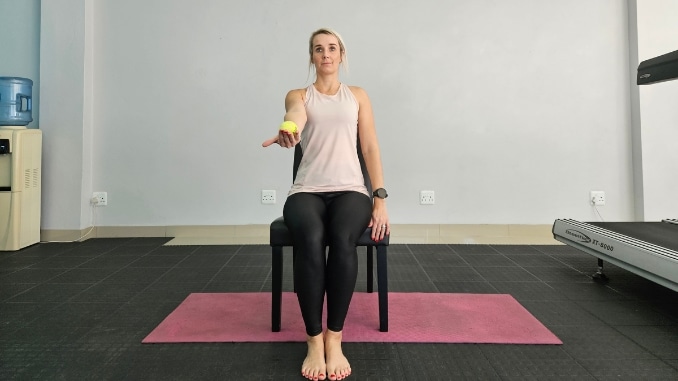 |
 |
 |
Exercises for Leg Lymphedema
1. Marching in place
- Stand upright with your arms on your sides and your feet hip-width apart.
- Raise one knee, then put it down, followed by your opposite knee in an alternating movement like you are marching but not moving in your place.
- Complete 10 repetitions for each leg, 1 set.
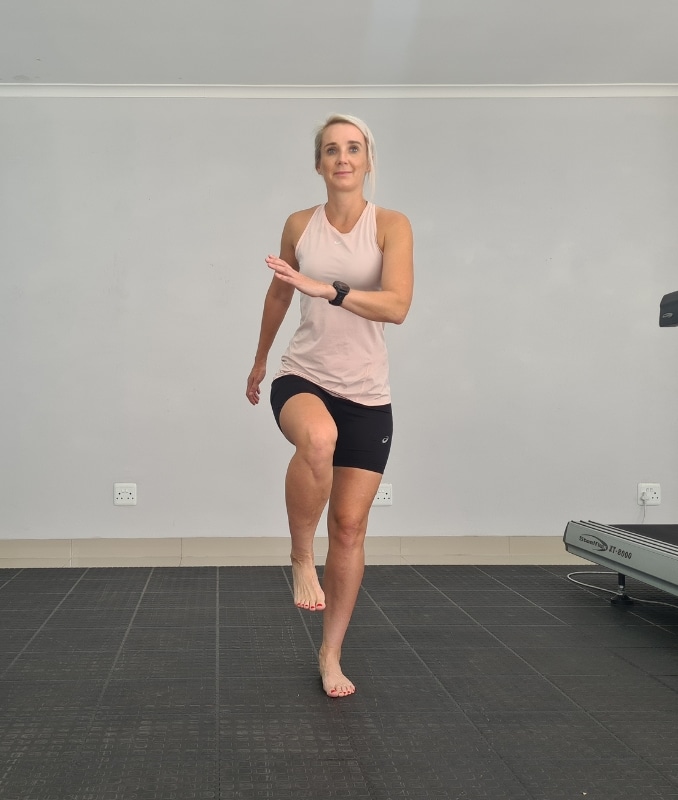 |
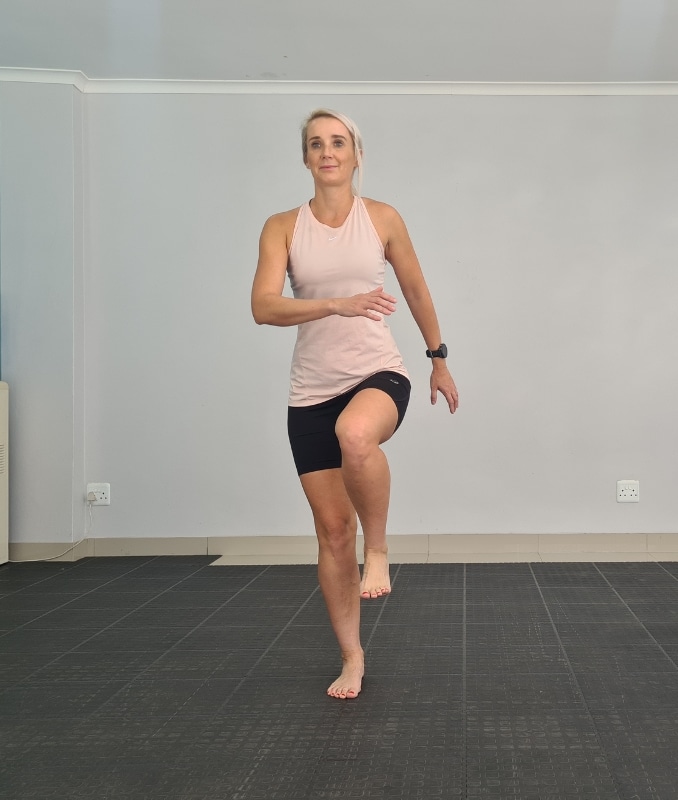 |
2. Hip Circles
- Hip rotations – bring your foot forward and draw a semi-circle, keep your other knee slightly bent, and hold on to a stable surface if you need help with your balance
- Raise your one leg just enough to balance yourself. You can hold onto a table or chair with your hand for additional support.
- Then pretend to draw a circle with your foot in the air.
- Repeat this movement on the opposite leg.
- Complete 10 repetitions for each leg, 1 set.
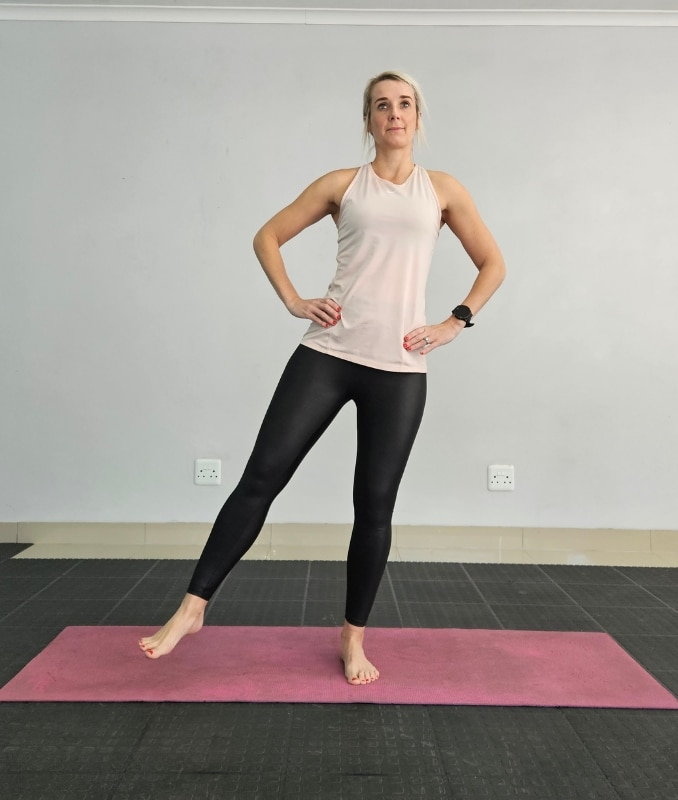 |
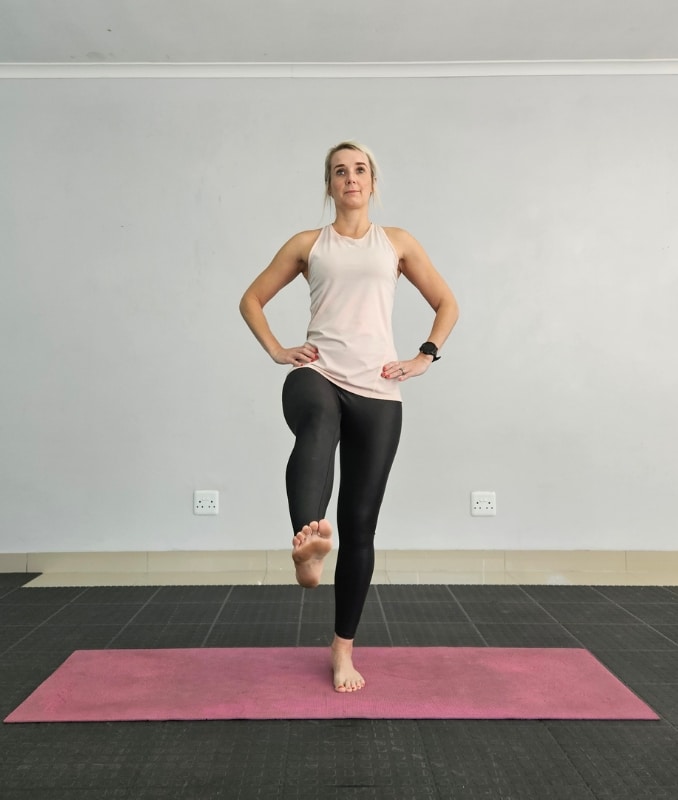 |
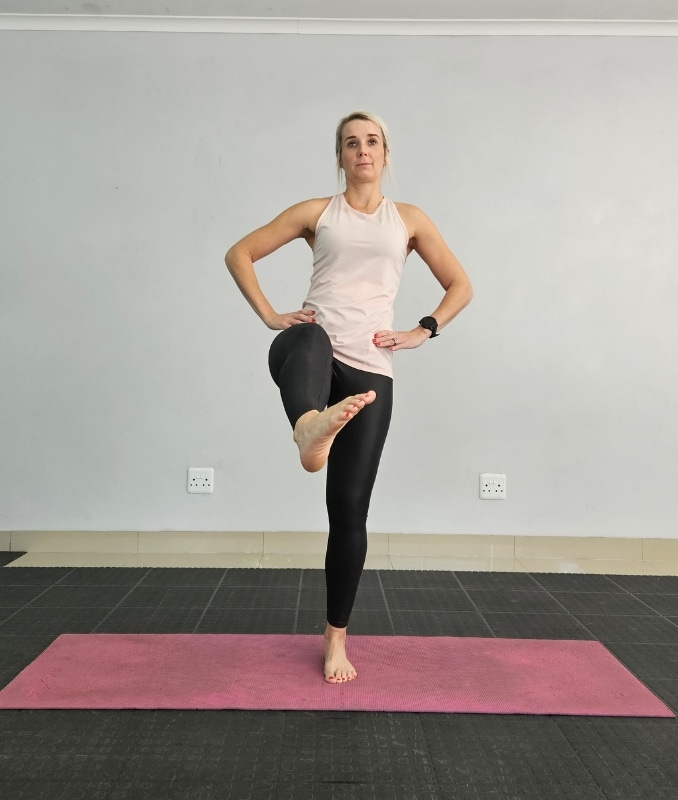 |
3. Heel Raises
- Stand upright with your arms on your sides and your feet hip-width apart.
- Raise your heel off the floor and stand on your toes.
- Hold this position for 3-5 seconds before putting your heels down on the floor.
- Complete 10 repetitions for each leg, 1 set.
4. Walking/Swimming/Cycling
Including these in your lymphedema arm exercises can also help to get your leg muscles moving.
Exercises on Head and Neck Lymphedema
1. Neck Range of Motion Exercises
- Sit upright in a chair with your arms on the side or your lap.
- First, tilt your head towards your right shoulder, then hold this position for 3-5 seconds before returning it in the middle.
- Repeat this movement on the opposite side. Make sure that your shoulders don’t follow your head.
- Second, turn your head up and look at the ceiling, then hold this position for 3-5 seconds before returning it in the middle.
- Repeat this movement. Make sure that your shoulders don’t follow your head.
- Third, bend your head down so that your chin goes towards your chest, then hold this position for 3-5 seconds before returning it in the middle.
- Repeat this movement. Make sure that your shoulders don’t follow your head.
- Complete 5 to 10 repetitions each step, 1 set.
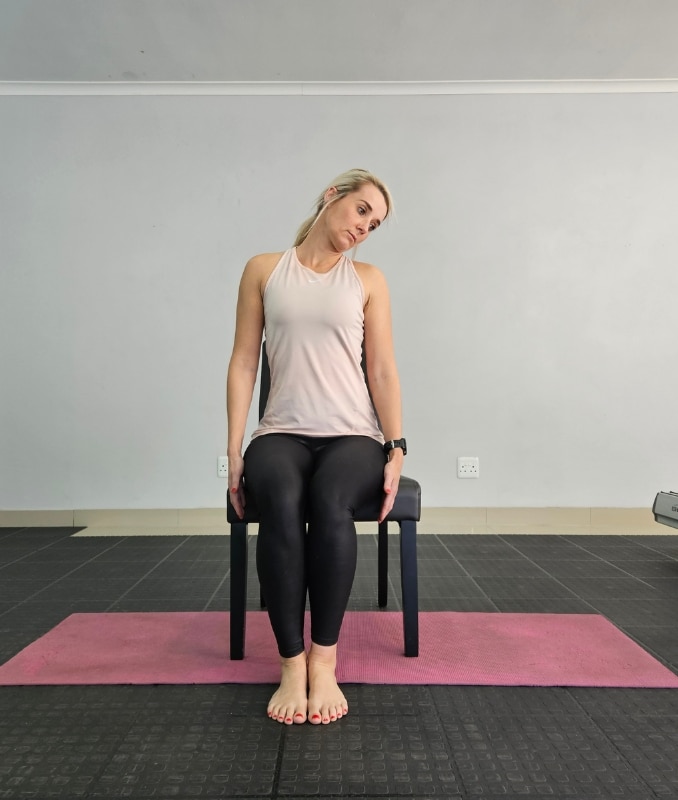 |
 |
 |
 |
2. Shoulder Range of Motion Exercises
- Sit upright in a chair with your arms on the side or your lap.
- First, bring your shoulders up towards your ears, then hold this position for 3-5 seconds before returning it down.
- Repeat this movement. Ensure your shoulders are the only ones moving here, not your neck.
- Second, rotate your shoulders in a circular motion forward, then rotate them again in the opposite direction.
- Repeat this movement. Make sure your shoulders are the only ones moving here, not your neck.
- Complete 5 to 10 repetitions each step, 1 set.
3. Mouth Exercises
- Open and close your mouth.
- Try to blow out imaginary candles gently.
- Smile and frown exaggeratedly to exercise facial muscles.
- Fourth exercise, say the vowels exaggeratedly again – a, e, i, o, u.
4. Jaw Exercises
- Slide your jaw from side to side.
- Push your jaw forward and backward.
- Repeat these movements.
- Complete 5 to 10 repetitions, 1 set.
Outlook
Lymphedema is a progressive condition; there is no cure. The outlook for this condition depends on severity. Managing symptoms can help reduce lymph fluid buildup and stimulate lymph flow, which could help someone with this condition. Consult your healthcare provider and take action to do these helpful lymphedema arm exercises.

